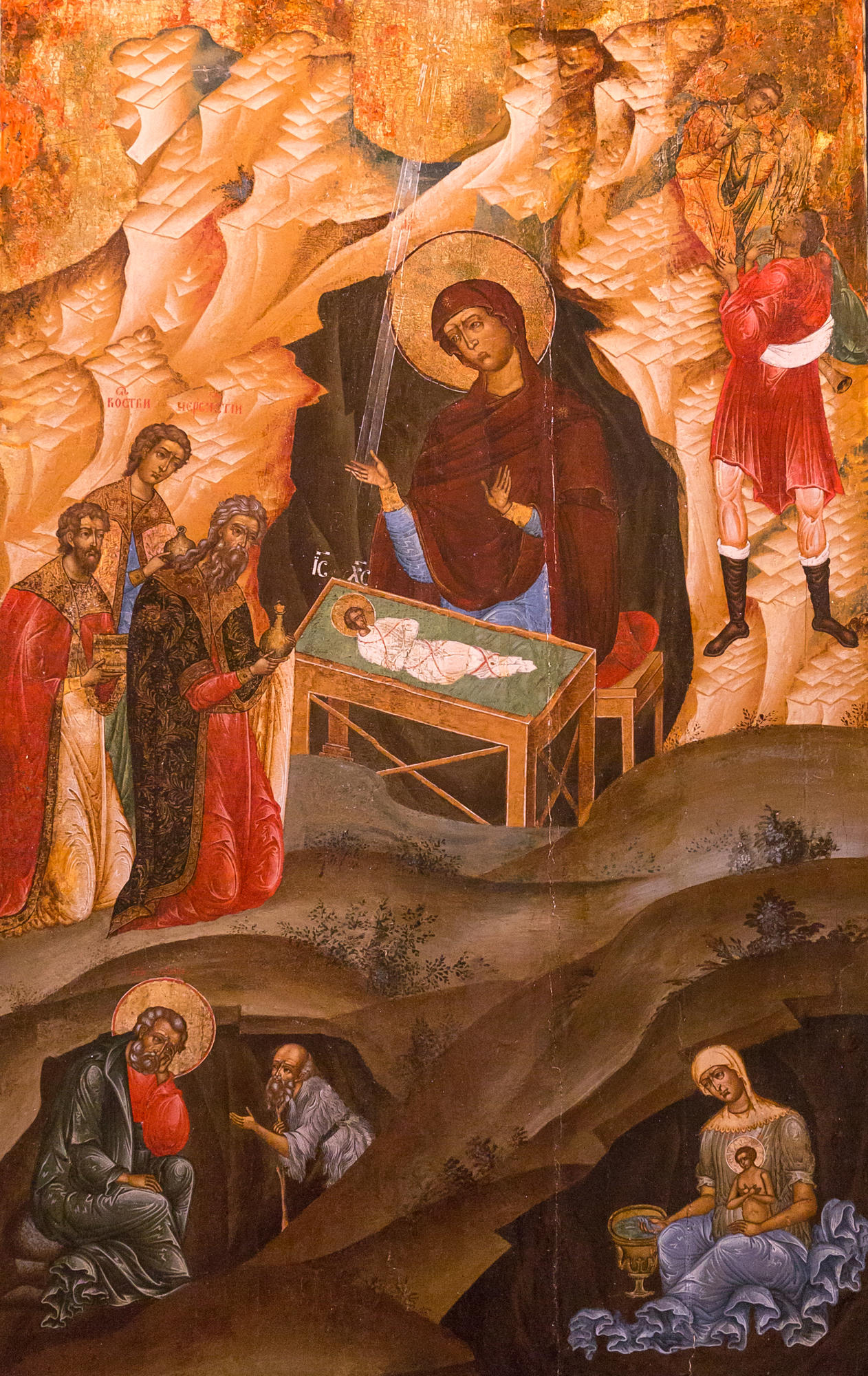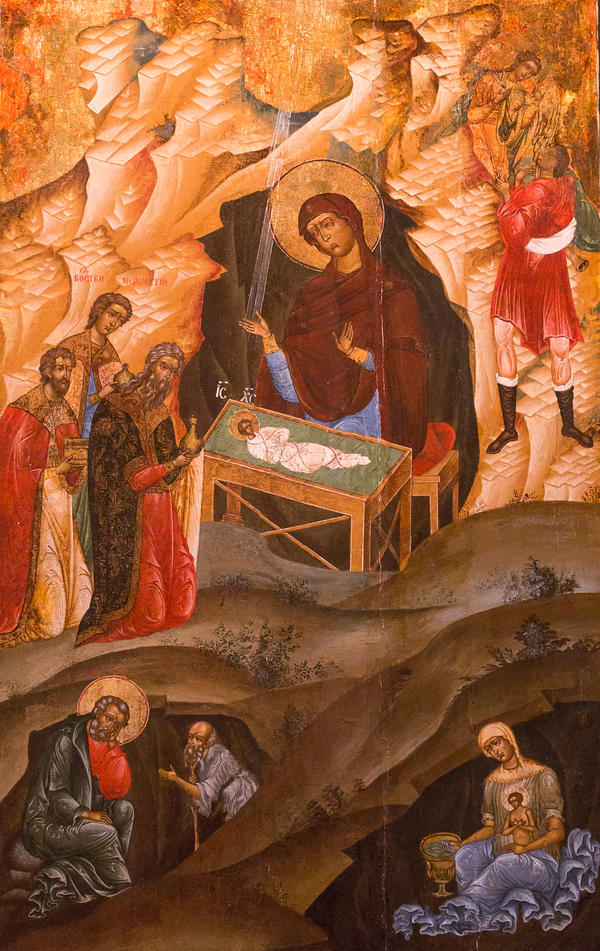The iconography of the Nativity of Christ was developed in Byzantium. It was based on two Gospels — from Matthew and from Luke. On Rus the first icon with a similar scene had appeared in the 12th century. Researchers suggest that the image from the exposition was painted by a master of the Vologda icon painting school in the late 18th — early 19th century.
The Nativity of Christ
Время создания
end of the XVII – beginning of the XIX century
Размер
114,5x68,5 cm
114,5х68,5 сm
114,5х68,5 сm
Техника
wood, gesso, tempera
Коллекция
3
Открыть в приложении#1
Unknown artist
The Nativity of Christ
#2
#4
The icon is of a multi-scene type. It combines several scenes dedicated to the same event. The main scene takes place in the cave where Jesus was born. At the center of the composition there are figures of the Mother of God and Christ. The light of the Bethlehem star strikes upon the face of the Devine Child crossing the right hand of the Virgin. This is a symbol of grace. Virgin Maria sits near her newborn Son. She is depicted with her palms raised up and opened to the outside. This position of his hands means Intercessory Prayer.
On the left there are three kneeling Magi. The Magi present gifts to the baby: gold, and aromatic censer- frankincense and myrrh. Gold symbolized that Jesus was born to become a tsar. Frankincense meant that Christ came to the earth to become a new teacher and a true high priest. Myrhh allegorically represented death: In ancient Israel it was used to embalm the body of the dead. This gift predicted the atoning sacrifice of the Savior.
On the left there are three kneeling Magi. The Magi present gifts to the baby: gold, and aromatic censer- frankincense and myrrh. Gold symbolized that Jesus was born to become a tsar. Frankincense meant that Christ came to the earth to become a new teacher and a true high priest. Myrhh allegorically represented death: In ancient Israel it was used to embalm the body of the dead. This gift predicted the atoning sacrifice of the Savior.
#5
The master performed the Nativity joyful scene in bright colours. He built the colour way on a combination of light hues of blue, whitened red, emerald green and yellow. For the background the master has chosen ochre hue of blended colour. It consisted of fine ground pigments of coal, ochre, iron oxide — hematite — and cinnabar. Cinnabar is a bright red colour made of mercury sulphide. Using this colour the artist painted the outwear of the Virgin — mapfory. The dark-cherry colour of the mapfory symbolized the bloody Crucifixion of Christ.
The artist imprinted figures of the Saints against the background of ascetic landscape. At first he completely poured the background with ochre paint, then in the lower part of the icon he lightly traced the ground in shape of a strip of brown colour — such image is called the earth. Using a thin brush, the author painted dark elegant bushes on it. At the top of the painting he wrote rock-mound ledges in light-ochre. In iconography this is called the symbol of rocky cliffs or mountain thrusts. Over them the master reflected the pink-blue play of light striking upon from the Bethlehem star.
#6
New Jerusalem Museum
читать дальшескрыть
00:00
00:00
1x
The Nativity of Christ
Время создания
end of the XVII – beginning of the XIX century
Размер
114,5x68,5 cm
114,5х68,5 сm
114,5х68,5 сm
Техника
wood, gesso, tempera
Коллекция
3
Открыть в приложении
Поделиться


